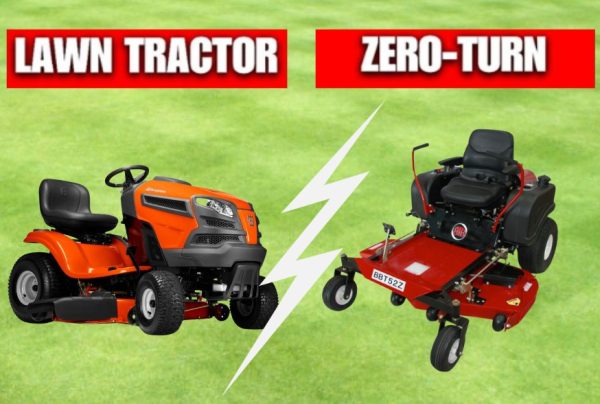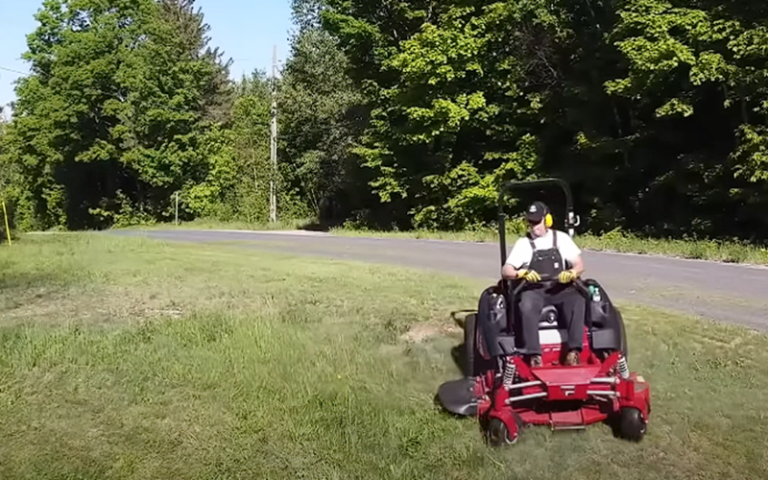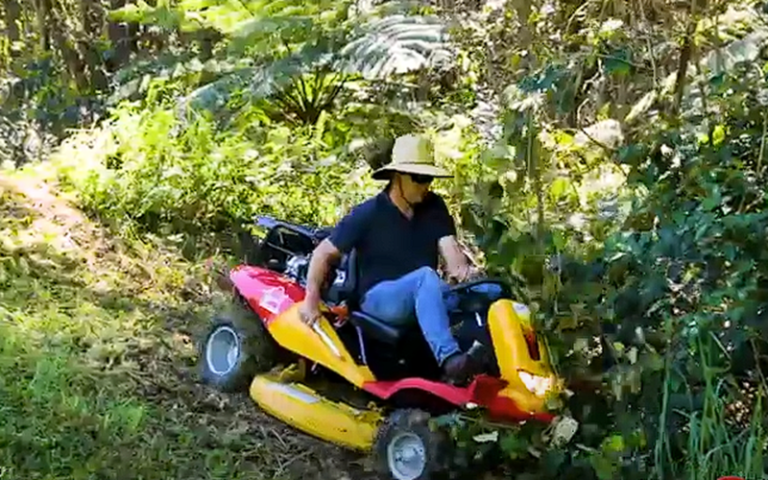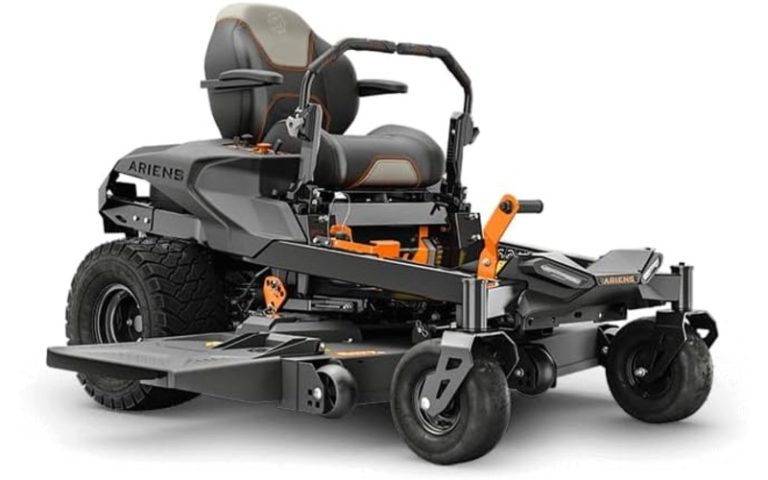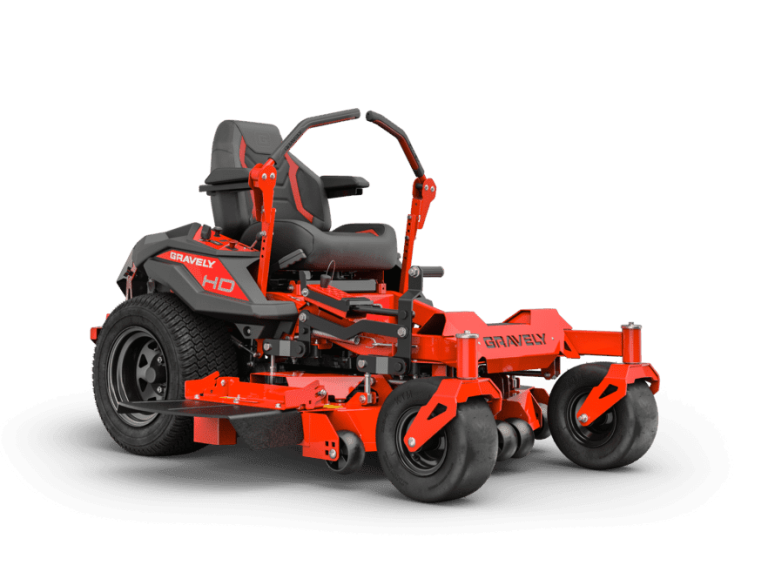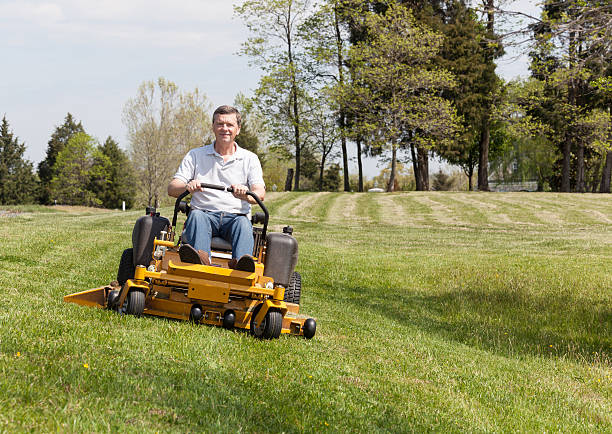Zero Turn Mower vs Lawn Tractor: Which Is Best For Lawn?
When it comes to maintaining a pristine lawn, choosing the right equipment can make all the difference. Two of the most popular options are zero-turn mowers and lawn tractors. Both have their strengths and weaknesses, and the best choice for you depends on various factors such as the size of your lawn, the terrain, and your specific mowing needs. In this article, we’ll compare zero-turn mowers and lawn tractors to help you make an informed decision.
Understanding the Basics
Before diving into the comparison, it’s essential to understand what zero-turn mowers and lawn tractors are and how they function.
- Zero-Turn Mowers:

As the name suggests, zero-turn mowers have a turning radius of zero degrees, meaning they can turn on a dime. This is achieved through independent wheel controls, which allow the mower to pivot in place. Zero-turn mowers are known for their speed, maneuverability, and ability to cut grass efficiently in tight spaces.
- Lawn Tractors:

Lawn tractors resemble small tractors and are designed primarily for mowing large areas of grass. They are equipped with a steering wheel and front-wheel steering, similar to a car, which provides a more traditional driving experience. Lawn tractors are versatile and can be used for a variety of tasks beyond mowing, such as towing attachments, snow removal, and hauling materials.
Key Differences Between Zero-Turn Mowers and Lawn Tractors
Now that we have a basic understanding of each type of mower, let’s explore the key differences between them.
-
Maneuverability
-
-
- Zero-Turn Mowers: The standout feature of zero-turn mowers is their exceptional maneuverability. The ability to turn 360 degrees on the spot makes it easy to navigate around obstacles like trees, flower beds, and garden paths. This feature is especially beneficial for lawns with intricate landscaping.
- Lawn Tractors: While lawn tractors offer good maneuverability, they can’t match the precision of zero-turn mowers. The front-wheel steering of a lawn tractor requires more space to make turns, making it less suitable for complex landscapes with numerous obstacles.
-
-
Speed and Efficiency

- Zero-Turn Mowers: If speed is a priority, zero-turn mowers have the edge. They are designed to mow large areas quickly, thanks to their high-speed capabilities and efficient cutting patterns. The ability to make sharp turns without slowing down means you can cover more ground in less time.
- Lawn Tractors: Lawn tractors are generally slower than zero-turn mowers. Their traditional steering and larger turning radius can make the mowing process slower, especially on lawns with many obstacles. However, they can still be highly efficient on open, flat terrain.
-
Cutting Quality
-
-
- Zero-Turn Mowers: The cutting quality of zero-turn mowers is often superior due to their ability to maintain a consistent speed and maneuver around obstacles with precision. This results in an even, professional-looking cut.
- Lawn Tractors: Lawn tractors also provide a good quality cut, but the results may not be as precise as those achieved with a zero-turn mower. The larger turning radius can lead to uneven patches, particularly around tight corners and edges.
-
-
Versatility
-
-
- Zero-Turn Mowers: While zero-turn mowers excel at mowing, their versatility is somewhat limited compared to lawn tractors. They are primarily designed for cutting grass, and while some models can tow light attachments, they are not as well-suited for tasks like hauling or snow removal.
- Lawn Tractors: Lawn tractors are the more versatile option of the two. They can handle a variety of tasks beyond mowing, such as towing carts, spreading fertilizer, and even clearing snow with the right attachments. This makes them a great all-around tool for property maintenance.
-
-
Comfort and Ease of Use
-
-
- Zero-Turn Mowers: Zero-turn mowers are designed with comfort in mind. Many models come equipped with padded seats, ergonomic controls, and adjustable features to enhance the operator’s comfort. However, the learning curve for operating a zero-turn mower can be steeper due to the unique control system.
- Lawn Tractors: Lawn tractors offer a more familiar driving experience, similar to that of a car. This makes it easier for beginners to operate. The steering wheel and pedal controls are intuitive, and the ride is generally comfortable, especially on flat terrain.
-
-
Terrain Compatibility
-
-
- Zero-Turn Mowers: Zero-turn mowers perform best on flat, open lawns. They can struggle on uneven terrain, steep hills, or wet grass, where traction may be compromised. If your lawn has significant slopes or is prone to being wet, a zero-turn mower may not be the best choice.
- Lawn Tractors: Lawn tractors are more versatile when it comes to terrain. Their larger tires and heavier build provide better traction on slopes and uneven ground. If your lawn has a lot of variation in elevation, a lawn tractor might be the safer option.
-
-
Maintenance and Durability
-
-
- Zero-Turn Mowers: Maintenance for zero-turn mowers can be straightforward, but it often requires a bit more attention due to their complex steering systems and high-performance engines. Regular maintenance is crucial to keep them running smoothly and prolong their lifespan.
- Lawn Tractors: Lawn tractors tend to be more durable and easier to maintain. Their simpler design and robust build make them more forgiving when it comes to wear and tear. Routine maintenance, such as oil changes and blade sharpening, is still necessary but generally less demanding.
-
-
Cost Considerations
-
- Zero-Turn Mowers: Zero-turn mowers are typically more expensive than lawn tractors. Their advanced features, high-speed capabilities, and precision come at a premium. However, for those with large lawns or professional landscaping needs, the investment can be worthwhile.
- Lawn Tractors: Lawn tractors are generally more affordable and offer good value for money, especially considering their versatility. If you’re looking for a multi-purpose machine that can handle a variety of tasks, a lawn tractor might provide a better return on investment.
Which Is Right for You?
Deciding between a zero-turn mower and a lawn tractor ultimately depends on your specific needs and the characteristics of your lawn.
- Choose a Zero-Turn Mower If:
- You have a large, flat lawn with few obstacles.
- You value speed and efficiency in your mowing routine.
- You want a professional-looking, precise cut.
- You don’t need your mower to perform other tasks, such as towing or snow removal.
- Choose a Lawn Tractor If:
- Your lawn has uneven terrain, slopes, or many obstacles.
- You prefer a more traditional driving experience with a steering wheel.
- You want a versatile machine that can handle a variety of tasks.
- You’re looking for a more affordable option.
Conclusion
Both zero-turn mowers and lawn tractors have their advantages and disadvantages. Zero-turn mowers are perfect for those who prioritize speed, maneuverability, and a precise cut, especially on large, flat lawns. On the other hand, lawn tractors offer versatility, ease of use, and better performance on varied terrain.
By considering your lawn’s specific needs, your budget, and the types of tasks you want your mower to perform, you can make an informed decision that will keep your lawn looking its best for years to come. Whether you opt for a zero-turn mower or a lawn tractor, investing in quality equipment is the key to maintaining a beautiful, well-manicured lawn.

Michael Anderson is a lawn care professional with many years of experience in the industry. His journey began in his family’s landscaping business, where he developed a passion for gardening and outdoor maintenance. Michael specializes in helping homeowners tackle challenging terrain, focusing on the best equipment and techniques for effective lawn care.
In 2024, he founded bestzeroturnmowerforhills.com to share his knowledge and help others find the ideal zero turn mower for hilly landscapes. His commitment to providing unbiased reviews and practical advice has made him a trusted resource for gardening enthusiasts.
